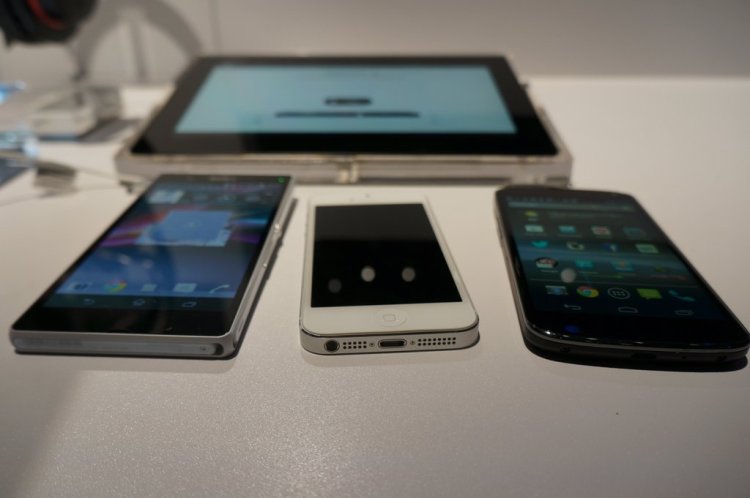Asia-Pacific
China
This country is an interesting conundrum. It has a $1.8 billion mobile gaming industry, but Google doesn’t have an official software market presence.
“Google Play doesn’t exist in China,” Chukong Technologies U.S. general manager Lei Zhang told GamesBeat. “That’s the biggest difference between the Android platform in the Chinese market and in the Western world.”
Chukong is responsible for casual games like Fishing Joy, which is one of China’s top-grossing apps.
Google Play’s absence doesn’t mean China is primarily iOS. Android devices have a 73 percent market share compared to Apple’s 23 percent. The difference is that all of those Google-based devices are running more than two dozen different proprietary app markets. This makes it extremely complex for Western developers looking to release their games there.
Even if a developer were to navigate the plethora of Android stores, China has another layer of complexity that is crucially important to success on mobile. Like in the rest of Asia, the Chinese discover most of their new games through messaging apps. Companies like Tencent, with its WeChat text-messaging service, have hundreds of millions of users, and it makes tons of money by taking a slice of the revenue from games.
“We estimate that about 20 percent to 30 percent of the total revenue for the Chinese mobile-gaming space this year will be from WeChat,” said Zhang. “That’s how big this one single platform is in the market.”
As big as WeChat is, Tencent picks and choose the games it releases on the service. You just can’t come along and take advantage of this infrastructure.
That means developers in China who aren’t on Tencent and WeChat need to do the legwork to get into the various Android stores.
“Developers can work with stores directly or through a publisher like us,” said Zhang. “The overall strategy is to have an ultrabroad distribution that covers all of the Android channels.”
The other half of the strategy is carrier billing.
Unlike in the United States, where consumers have more Android devices but spend more on iOS, the Chinese spend between 70 percent and 80 percent of mobile revenue on the Google operating system. That’s because the Chinese have access to and use carrier billing.
“About two years ago, we started carrier billing for smartphone games in China,” said Zhang. “And that saw a huge pickup in spending. Fishing Joy became the highest-grossing mobile game at the time. We enjoyed an extensive revenue pickup on the Android side in China.”
With this business model, consumers don’t need a credit card. It creates a easy payment process that has boosted the number of people who now pay for virtual goods in games.
It isn’t perfect, however, due to a cap that most carriers place on that type of billing. Per transaction, and sometimes per day, mobile companies will cut customers off after $5. That’s OK for social and mobile games, typically, but some releases have microtransactions that are worth $30 to $50. Carrier billing simply won’t work with that.
In games that rely more on bigger purchases, iOS often performs better than Android. Apple has also made a deal with China Mobile to get the App Store running there last year. This means the technology company is actually seeing software generate revenue, unlike Google.
“iOS revenue grew around 70 percent quarter-over-quarter from Q4 2013,” said Sanchez. “There is clearly growing demand for iOS there.”
Japan, Korea, and the rest of Asia
While China is big and convoluted, Japan is actually a more important region right now. Sure, the U.S. is the biggest in terms of revenue, but Japan is No. 2.
That’s because consumers in Japan spend much more than those in any other region. In a study from earlier this year, research firm Distimo found that developers make an average revenue per download (ARPD) of $6.34 in Japan. That’s more than twice the $2.52 APRD in the States. At the same time, Japan also has one of the lowest player acquisition costs. Distimo found the average cost per install is only $1.86 in Japan. That’s extraordinarily low — especially when you compare it to the ARPD.
That’s why Western developers like King and Supercell have zeroed in on that market. King is currently running a second batch of TV commercials for its Candy Crush Saga mobile puzzler featuring Japanese celebrities. The studio even just opened an office in Tokyo that will work specifically on squeezing the most out of Japan’s big spenders.
And between iOS and Android, Google’s OS is the bigger winner, as it makes up more than 50 percent of smartphone spending in Japan.
Korea is even more heavily weighed in Android’s favor. More than 80 percent of the app-market revenue in that country comes from Google Play. That’s primarily because Korea is the home of hugely successful Android vendor Samsung.
South Korea is also the fastest-growing mobile market as its revenue grew by around 900 percent from 2012 to 2013. Japan and China are No. 2 and No. 3 on that list, respectively.
As in China, messaging apps dominate in Japan and Korea. Line has 175 million users around the world, and many of those live in Japan. Meanwhile, Kakao rules Korea, and it has 140 million users around the world.

